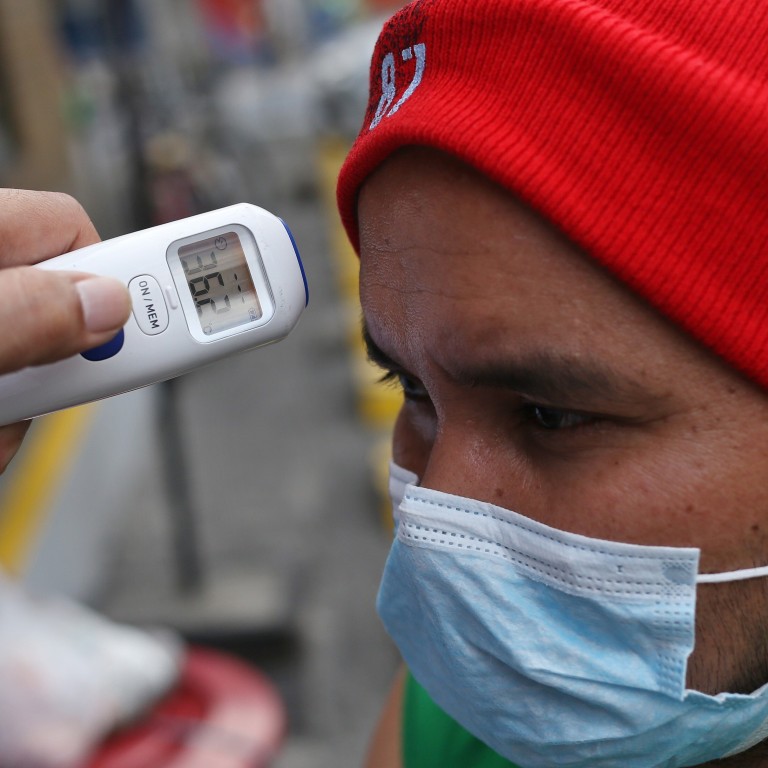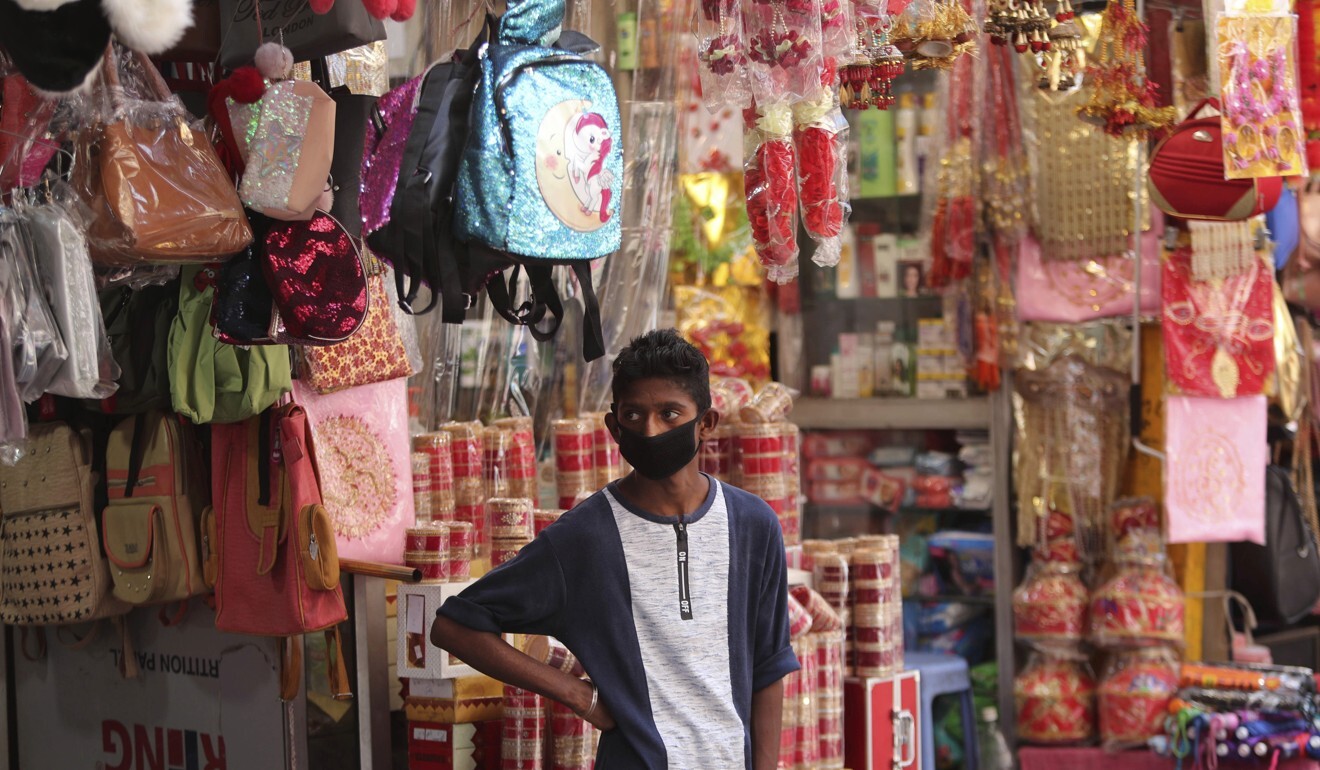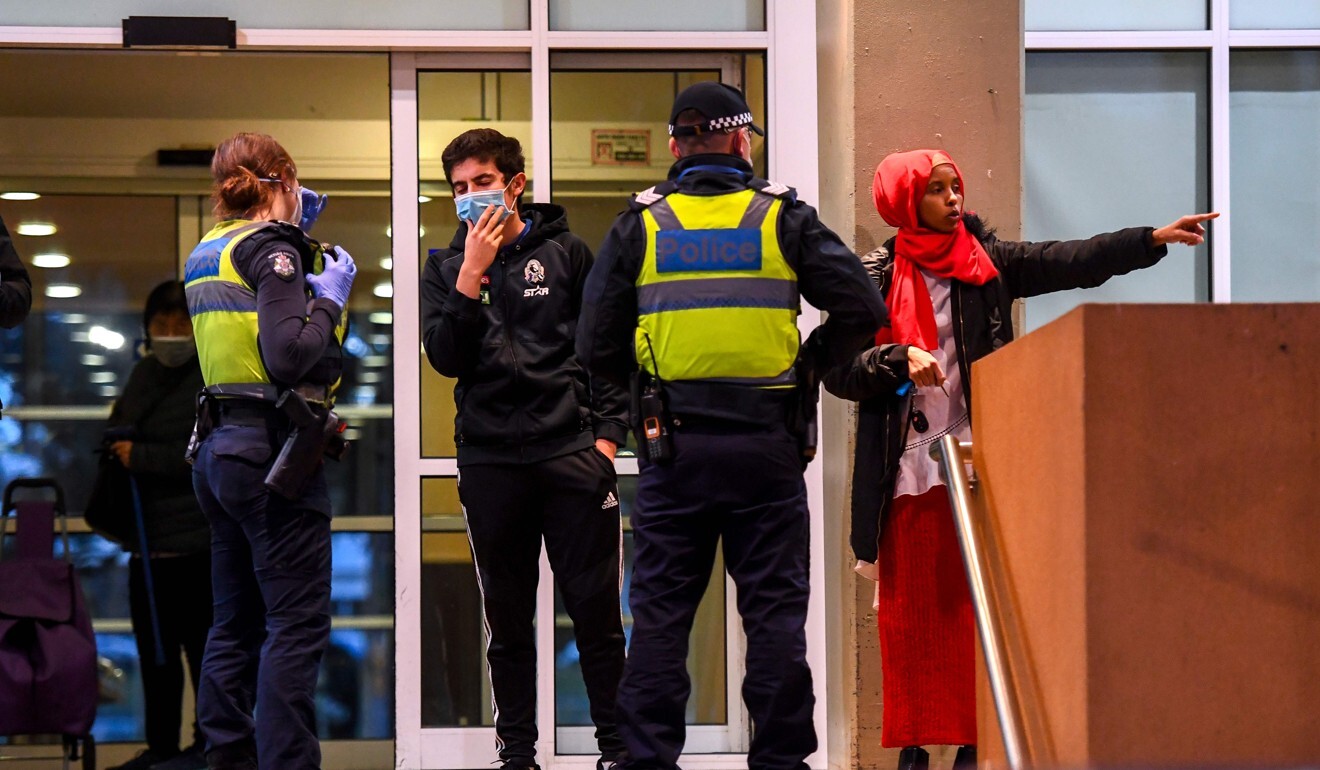
India’s coronavirus epidemic overtakes Russia as Indonesia, Philippines reports continued surge
- India now has the third-highest number of cases behind the US and Brazil
- Indonesia reported the highest single-day number of deaths on Sunday, while the Philippines announced a record number of new cases
Meanwhile, India overtook Russia to become the third worst-affected nation by the coronavirus after reporting 24,248 new cases on Monday, while Australia has closed the borders of its two most populous states in response to a fresh spike in cases.
Indonesia reported 70 casualties from the coronavirus on Monday, taking its total to 3,241, the health ministry said. Indonesia, which has the most infections in Southeast Asia, also reported 1,209 new cases in the past 24 hours, bringing the national tally to 64,958.
Singaporeans return to work, using smartphone apps and QR codes to fight coronavirus
“If we see the number of deaths nationwide, we are currently have [a mortality rate of] 5 per cent,” Achmad Yurianto, the ministry’s disease control and prevention director general, said.
“This is relatively high compared to the global average, which is currently at 4,72 per cent.”
Despite the rising death toll, authorities are proceeding with plans to gradually reopen Bali to tourism, starting with domestic travel while maintaining “strict health protocol”, provincial secretary Dewa Made Indra said.

01:11
World’s largest temporary Covid-19 hospital opens in India as nation records record spike in cases
The Philippines on Monday reported 2,099 new coronavirus cases as quarantine restrictions eased nearly four months since a lockdown was imposed. The death toll from Covid-19 rose to 1,303, with six additional deaths reported over the past 24 hours, the Department of Health said.
The additional cases included 1,258 “fresh cases” or those confirmed in the past three days, and 842 “late cases” or those confirmed previously but were only added now to the tally, the department said. The country’s total was at 46,333 as of Monday, it added.

By comparison, other Southeast Asian nations appear to have the pandemic increasingly under control, with numbers trending downwards steadily.
Thailand has not recorded a fatality in the past month, and has added fewer than 10 new cases each day during that period. Vietnam has yet to record a single casualty and has identified only a handful of new infections each day since mid-May, with active cases now below 20.
In the Philippines, the health department called on all establishments to implement minimum health standards in their premises and immediately report any clustering of cases in their workplaces.
“As the country continues to ease community quarantine measures, the rise in the number of cases today may be attributed to the increased contact among the population,” the department said in its bulletin.
“We implore the public to continue practising general preventive measures, such as proper handwashing, physical distancing, wearing of mask, avoidance of non-essential travel outside their homes, and to observe minimum health standards to prevent the transmission of the Covid-19 virus.”
Since June 1, the government has been gradually easing the lockdown imposed on the country’s most populous island of Luzon, including the capital of Manila, and in other high-risk areas in mid-March.
Filipinos cheer as 18-cent fare jeepneys return to roads
Limited public transport has resumed, while shopping malls, salons, barber shops and private offices have also opened. Restaurants are now allowed to offer dine-in services, but only at reduced capacity.
“So if they declare that they have full capacity or the percentage of beds occupied in the hospitals for Covid is high, we have to remember that these are just the assigned dedicated beds for Covid and not the entire hospital capacity,” spokeswoman Maria Rosario Vergeire said.

India announced on Monday that it has nearly 700,000 coronavirus cases, taking it past Russia to become the third-hardest-hit nation in the global pandemic.
The health ministry said 697,358 cases had now been recorded, a rise of 24,000 in 24 hours, while Russia has just over 681,000.
The US and Brazil have the highest numbers of cases but India’s tally is not expected to peak for several more weeks and experts predict the one million figure will be passed this month.
India has registered 19,693 deaths from the virus, a much lower number than many other badly hit countries.
Coronavirus bling bling: Indian businessman wears US$4,000 custom gold mask for protection
In the capital New Delhi, medical staff started treating patients at a spiritual centre converted into an isolation facility and hospital with 10,000 beds, many made of cardboard and chemically coated to make them waterproof.
The country has failed to contain the spread of the virus despite implementing one of the world’s most expansive lockdowns at the end of March, when there were fewer than 1,000 cases. Prime Minister Narendra Modi was forced to ease the curbs in June to rescue an economy that’s hurtling toward its first contraction in more than four decades.
Millions of migrant worker who lost their city-based daily-wage jobs in the lockdown have now returned to their native villages. This has created new routes of transmission for the virus to rural areas where medical facilities are even more rickety.

For the first time since the pandemic began, the border between Australia’s two most populous states – Victoria and New South Wales – will be closed from midnight on Tuesday, officials from both states said.
Conspiracy theories in Australia lead thousands to refuse Covid-19 tests
Victoria – home to more than 6.6 million people – announced a record 127 new cases Monday, as the virus spread through Melbourne, including a cluster in several densely populated apartment blocks.
Victorian Premier Daniel Andrews described the decision to close off the state as “the smart call, the right call at this time, given the significant challenges we face in containing this virus”.
After weeks of easing virus restrictions, Melbourne has recorded a huge spike in community transmission, leading health officials to effectively shut off some neighbourhoods to the rest of the city until the end of July.
Of the new cases, 16 were detected in nine high-rise public housing towers, where 3,000 residents were locked in their homes on Saturday in Australia’s strictest Covid-19 response to date.
So far, just 53 cases have been recorded in the buildings – which are home to a large number of vulnerable migrants – but there are concerns the virus could spread rapidly, with one health official likening the crowded conditions inside to “vertical cruise ships”.
Australia has recorded more than 8,500 cases of Covid-19 and 105 deaths from the virus.
The bulk of new daily cases are now being detected in Melbourne, while most other regions are enjoying relaxed restrictions after largely curbing the virus spread.
Additional reporting by Agence France-Presse, Bloomberg, Reuters

